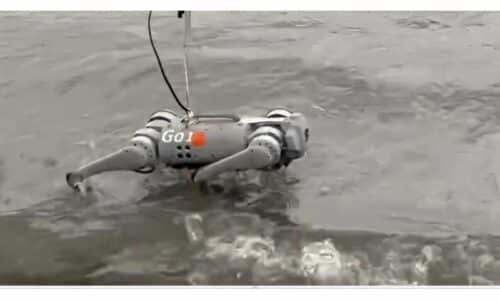The robot feet, inspired by moose hooves, improve movement on mud and snow by reducing sinkage, suction force, and energy use on difficult terrains.

Researchers at Tallinn University of Technology (TalTech) have created a new type of bio-inspired robot feet designed to improve mobility on difficult surfaces like mud and wet snow. Their study highlights how these innovations could enable robots to navigate complex natural terrains, supporting environmental monitoring, agriculture, and disaster response.
While legged robots have been studied for decades and continue to become more energy-efficient and adaptable, certain natural terrains remain particularly challenging. These new feet aim to overcome such obstacles by improving how robots adjust their movements to different ground conditions.
Lab experiments with real moose feet have confirmed their unique functionality. When stepping into and out of mud, the moose’s split hooves expand and contract, adjusting their contact area. However, the primary advantage isn’t the increased surface area. Instead, it comes from how the cloven hooves break the suction force when pulled out of the mud.
Researchers observed that a moose’s hoof functions similarly to a suction cup. By adjusting its shape, the hoof breaks the suction force created by mud, much like prying a suction cup off a surface. Mud behaves similarly to a wet bathroom tile, generating suction under the animal’s feet, which makes lifting the leg challenging. The movement of the hooves disrupts this tension, facilitating easier movement. The hooves make movement faster and more energy-efficient, preventing potentially fatal situations where the animal could sink too deeply, become stuck, and perish.
Inspired by this, the researchers developed silicone feet for a legged robot that mimics the same behaviour. Testing on muddy surfaces showed that this simple modification reduced the robot’s sinkage and suction force by half, lowering its energy consumption by up to 70%.
According to the researchers, no drawbacks have been identified with the modified “robo-moose” feet.
Reference: S Godon et al, Robotic feet modeled after ungulates improve locomotion on soft wet grounds, Bioinspiration & Biomimetics (2024). DOI: 10.1088/1748-3190/ad839c







